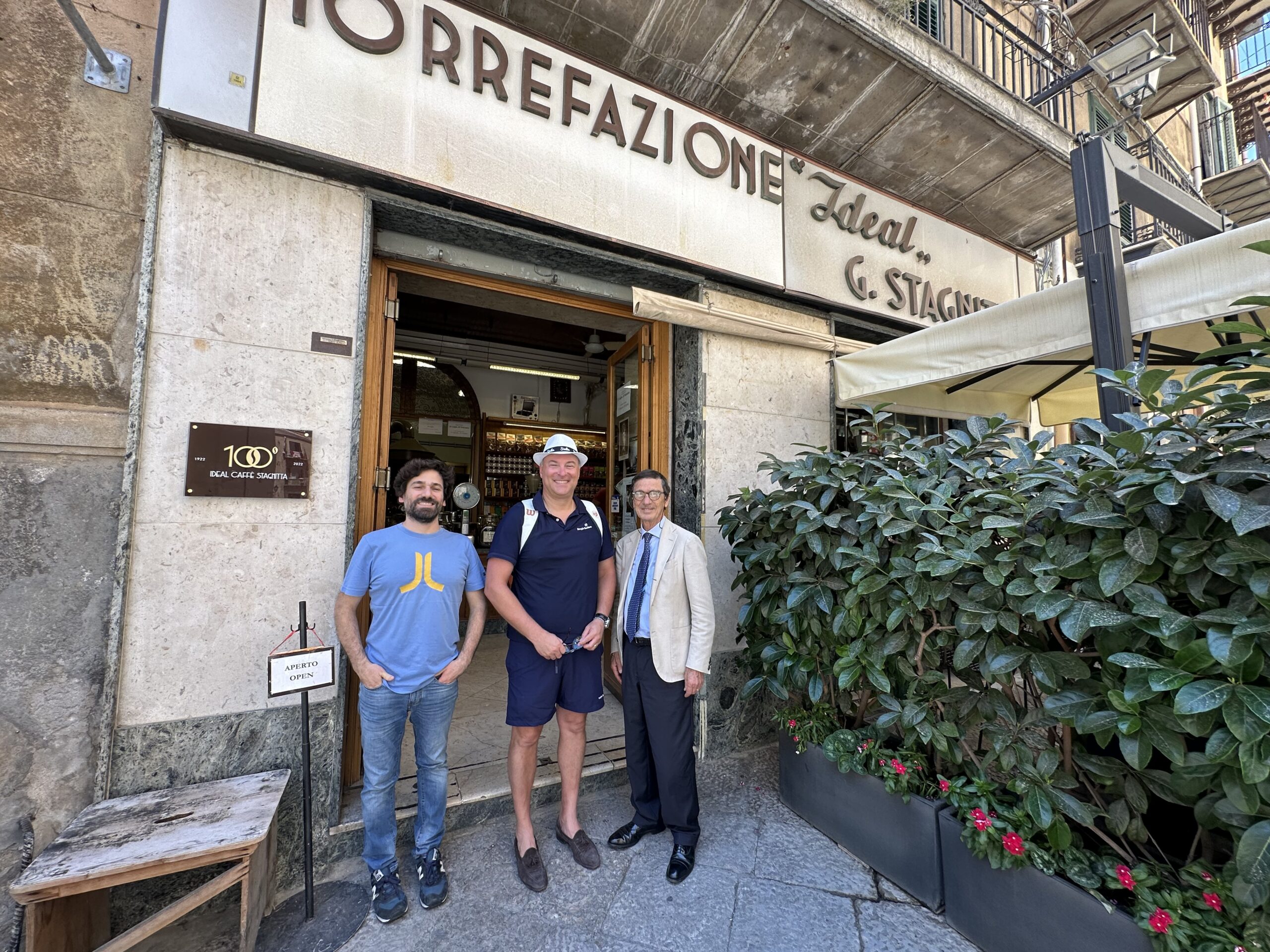Porto Badisco – Popular Southern Italian Beach Town with Literary Significance
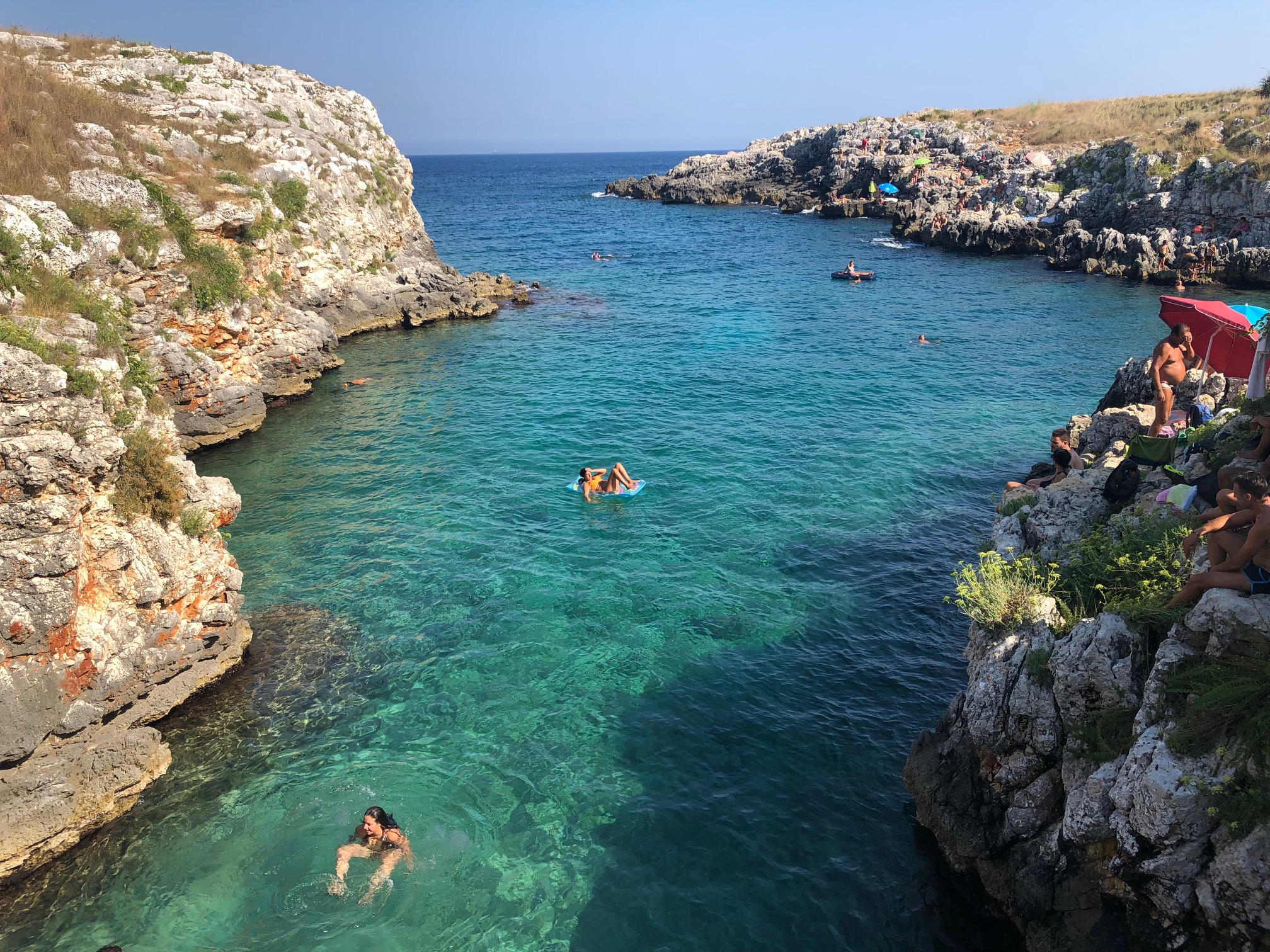
Italian Enthusiasts know that Italians love “taking” sun just as much as they love “taking” their espresso. For me, I enjoy a nice beach day every now and then for maybe, 3-4 hours, but for many Italians during the summer months, it’s an everyday, all-day, affair. Last month while in the southern Puglia area of Salento, I joined my local friends for a day at the beach – an opportunity I could not miss. Many of Italy’s most beautiful beaches are in Salento, and being that my friends are natives of Salento, I was confident that my experience with them would be extraordinary.
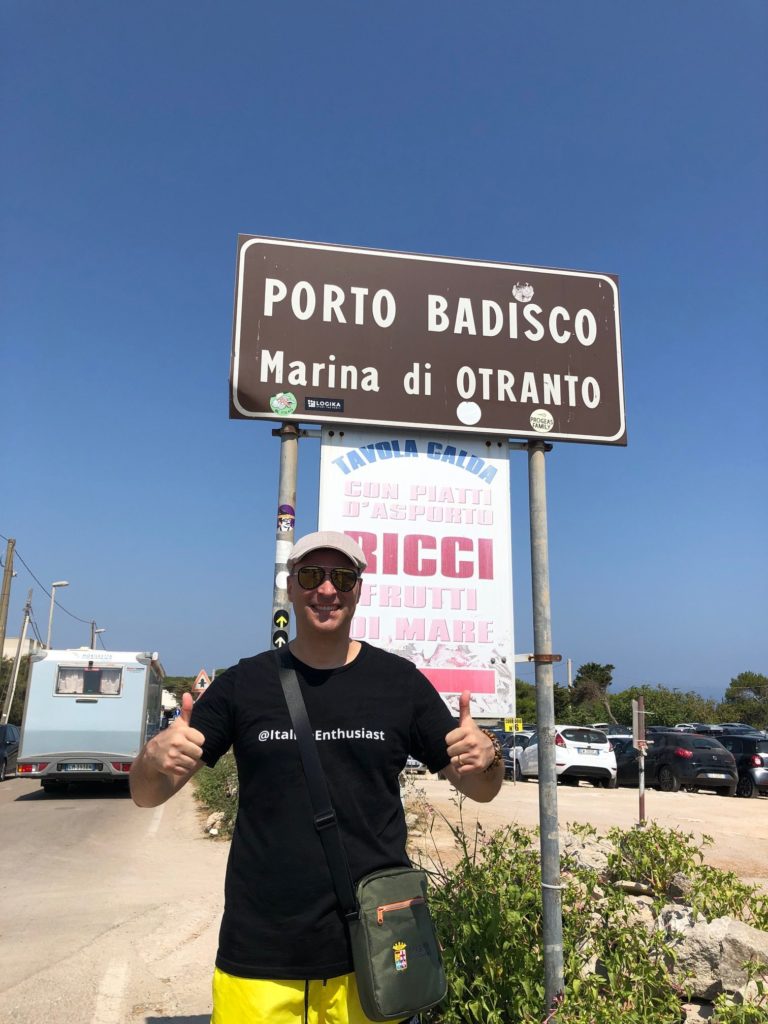
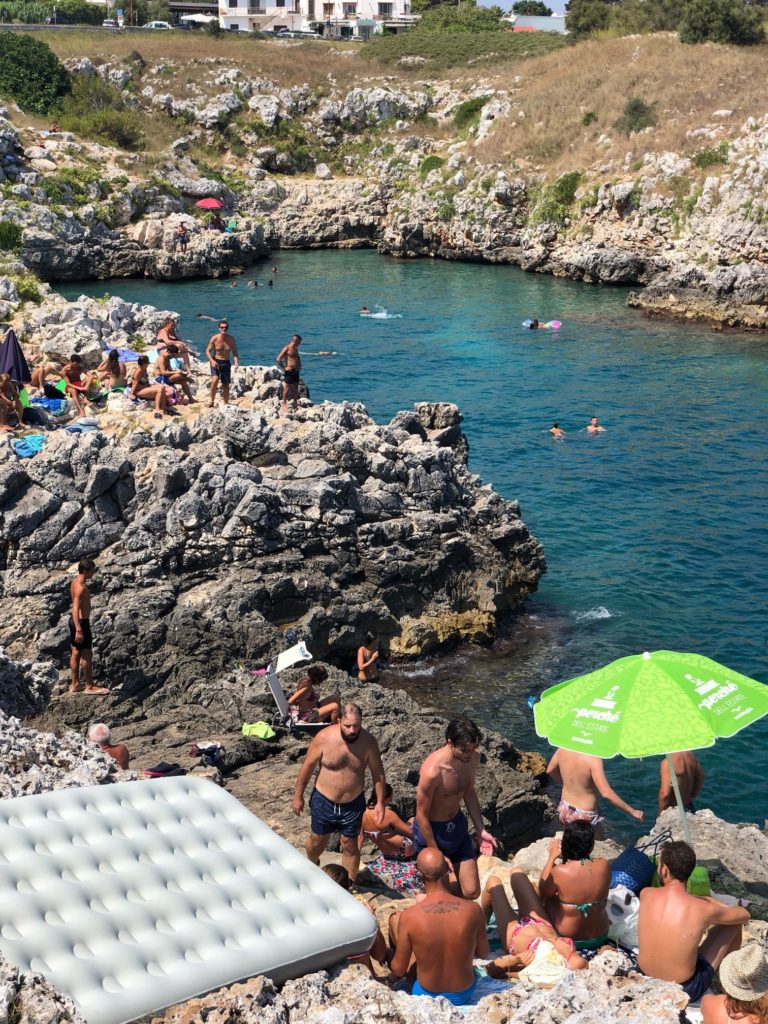
We arrived in a beach town along the Adriatic coast called Porto Badisco, which is in the municipality of Otranto, in the province of Lecce. After parking our car on the side of the road, we walked towards an opening in the street’s guardrail, and proceeded to walk on a beaten path of stone surrounded by weeds. Five minutes later, we arrived at our destination: Porto Russo (the red port). Most Italians will refer to the beach as Porto Rosso, but locals refer to it using dialect, which is why Russo is used to describe the red color of the rock, as opposed to the correct pronunciation, Rosso. Initially, I was skeptical. Where is the sand? Where are the umbrellas? Where are the lifeguards? How about the guy on the ATV selling ice cream like I grew up with at the Jersey shore? This beach was different.
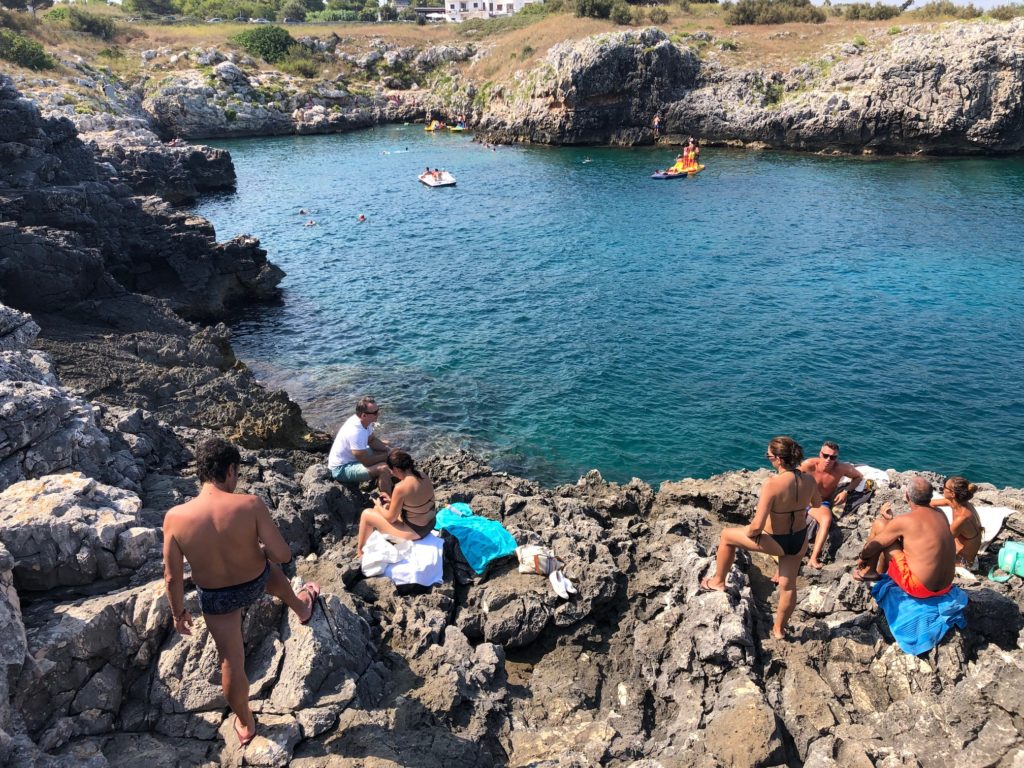
I followed my friends who now began crossing over a rocky and sharp terrain called scoglio. After a few minutes we carefully descended towards the water and parked ourselves on the rocky surface. My native friends placed their towels on the rock and comfortably stretched out as if they were lounging on a soft hammock. “Do you prefer rocky or sandy beaches?” I asked my friend Fausto. “Rocky beaches,” he responded. Soon after, Fausto led us to the water, where we took a swim. In the water, Fausto showed us the secrets of Porto Russo.
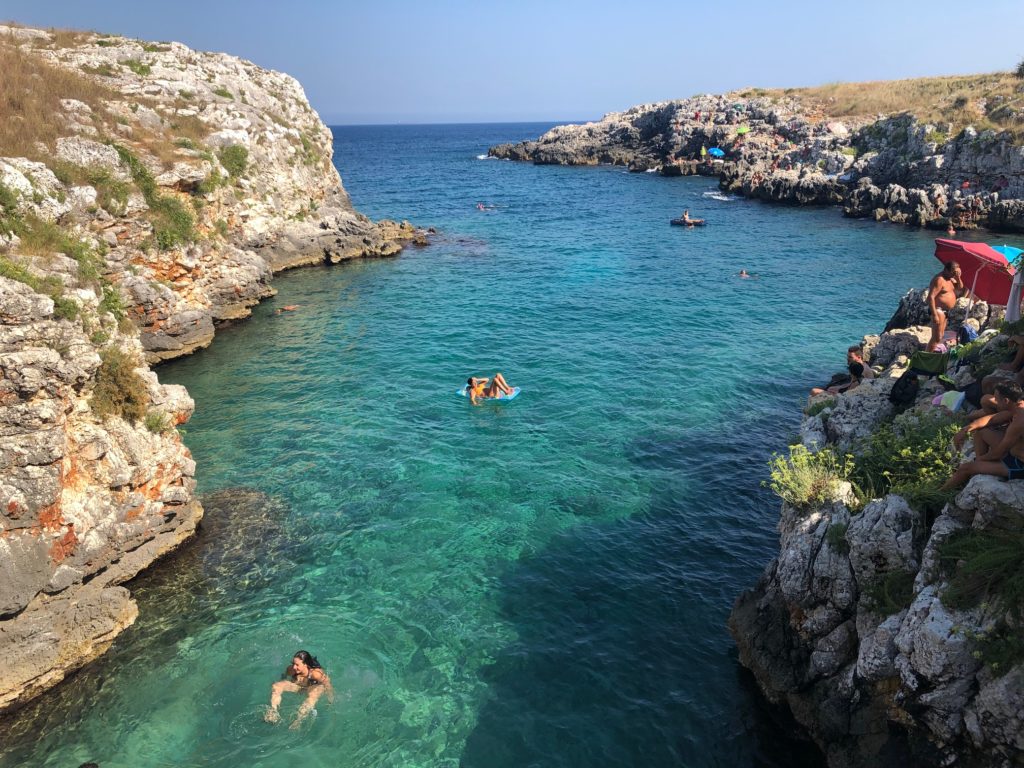
We all jumped into the refreshing, clear water of the Adriatic port and swam for a good 45-minutes, stopping in grottos and shallow areas along the perimeter. As a stranger to Porto Badisco, I would have never jumped in the water without a native guide, but because Fausto grew up frequenting Porto Badisco, I trusted I was in good hands. Fausto pointed out various snails along the wet rocks called cozza patella, as well as sea creatures such as granchi and pomodori di mare. He showed us areas of the port where the water is warmer, and hidden holes in underwater rock where water shoots out colder. With the help of my native friends, I got to experience Porto Russo not as a tourist, but as a Salentino.
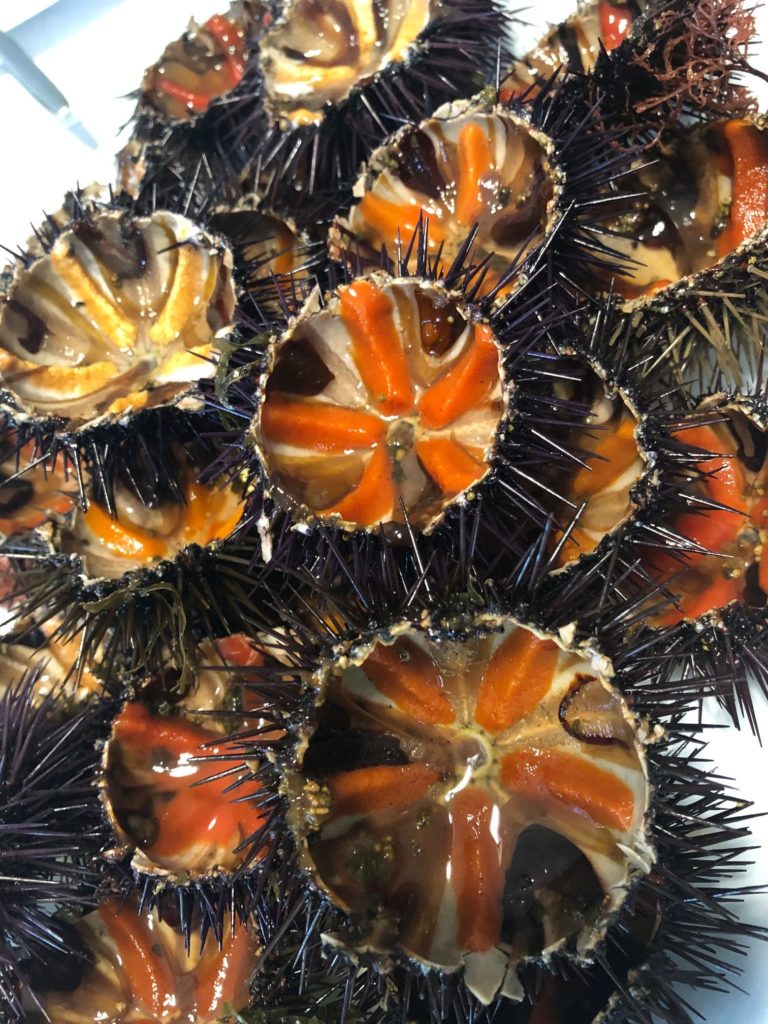
For lunch we walked back towards the road where there were several restaurants filled with hungry beach-goers. Porto Badisco is famous for their sea urchins (known in Italian as Ricci), which is why many local restaurants pride themselves on their Ricci dishes. After a fulfilling lunch, followed by the summer coffee of Salento known as Caffe Leccese (espresso, sweet almond milk and ice), we returned to the beach for another round. By this time, the rocky beach started to grow on me, as not only was the water undeniably pristine, but when I laid down on the rocky surface, I whispered to myself, “ah, how wonderful!” Of course this was right before I sliced my right toe on the sharp scoglio, but even as the blood stained my flip flop, I whispered again as my heart raced, “could there be anything more authentic?”
Aside from Porto Badisco being a popular beach town, it has long been accepted to be the first Italian town Aeneas (from Virgil’s Aeneid) arrived after escaping from Troy. In the Aeneid, however, the literal references to Aeneas’s arrival in Italy refer to a temple dedicated to Minerva very high above the coast and with an arched port defended by a rock. Some historians now believe that the actual location of Aeneas’s arrival is closer to the town of Castro (about 8 miles south of Porto Badisco) because in 2015, archaeologists found a large female mutilated statue from the 4th century BC that could represent the goddess Minerva.
In Porto Badisco there is also the Grotta dei Cervi, which contains important drawings made with bat excrement datable to the Neolithic period and is characterized by numerous ravines and coves of rare beauty. Porto Badisco is a unique place, not only for its extraordinary history and literary significance, but also for its modern popularity among native Italians.
For any Italian Enthusiast beach lovers visiting Salento who want an authentic Italian beach experience, try out a rocky beach, and try out Porto Russo. As they saying goes, once you go rock, you never go bock.
Recommended Posts

THE BEST FAMILY BEACHES OF SIRACUSA, SICILY
June 21, 2024

